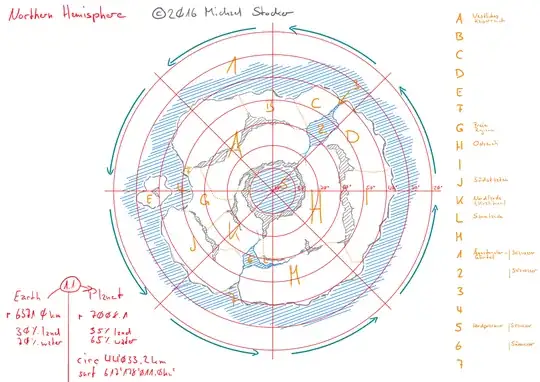Disclaimer: This question is the second of a new series of questions of mine about introducing hexapeds to the fauna of my conworld. There are/will be other questions addressing i.a.: characteristics, ecosystems, evolutionary factors
Setting: In my conworld the world is divided into two humongous continents, each taking up about half of the total landmass of the planet. Each located at the Northern and Southern poles respectively.

1 Equatorial Belt | Saltwater
2 | Saltwater
5 Northern Polar Sea | Saltwater
6 | Sweetwater
Fauna: The Beasts-of-Burden (further BOB) coexist with many other animals and have coevolved with them. They do not directly supplant any other group of earth animals; they fill their own niche as the largest docile herbivore of the more mountainous regions (more info on its characteristics).
Other than BOBs, the conworld contains most of the families of earth fauna & flora but with much less variety in species (thus there are horses, cattle, goats, wolves, and so forth). There are also other hexapeds, although likely not as various as quadrupeds.
Hexapeds: Besides the BOBs there are a bunch of different, as of yet not clearly defined, hexapeds. For the sake of this question we assume there to be hexapeds fitting into different categories of land-based mammalia. Thus there are likely some more, maybe smaller hexaped-herbivores. There's likely to be some hexaped-rodents (e.g. hexarats which can climb buildings easily), as well as there are bound to be predatory hexapeds (at least some will have evolved to more efficiently hunt hexarats, let's call them hexacats).
Still none of these will feature a pair of hands.
Question: Where do BOB fit into Linnaean taxonomy? And why did you put it there?
Bonus (for additional points): Where would the BOB fit in modern (current day) taxonomy?
The question only looks at this northern continent.
The question does not ask for the plausibility of a six-legged mammal in general.